Crichtonchloe
On this page, you find all documents, package deals, and flashcards offered by seller crichtonchloe.
- 9
- 0
- 0
Community
- Followers
- Following
9 items
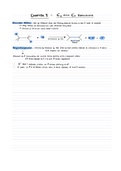
E1 E2 REACTIONS
E1 E2 REACTIONS and Dehydrohalogenation
- Class notes
- • 1 pages •
E1 E2 REACTIONS and Dehydrohalogenation
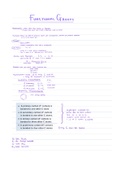
Functional Groups
Names of functional groups when they are attached to organic compounds. Explains lone pairs, pi bonds and aliphatic hydrocarbons.
- Class notes
- • 1 pages •
Names of functional groups when they are attached to organic compounds. Explains lone pairs, pi bonds and aliphatic hydrocarbons.

Naming Organic Compounds and Understanding Functional Groups
How to name Organic Compounds based on assigning priorities of different Carbon chains. Allows you to also understand Functional Groups and how they are ordered in organic compounds.
- Class notes
- • 4 pages •
How to name Organic Compounds based on assigning priorities of different Carbon chains. Allows you to also understand Functional Groups and how they are ordered in organic compounds.
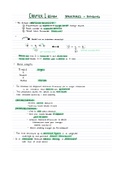
Organic Structure and Bonding
Naming structures and understanding bonding of organic molecules. Bond lengths and formal charge steps.
- Class notes
- • 2 pages •
Naming structures and understanding bonding of organic molecules. Bond lengths and formal charge steps.
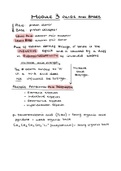
Acids and Bases
Acids and bases with strengths, characteristics and factors affecting.
- Class notes
- • 2 pages •
Acids and bases with strengths, characteristics and factors affecting.
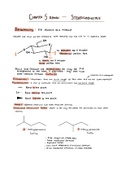
STEREOCHEMISTRY
Overview of different types of stereochemistry. Explains how to name different stereoisomers, differences between, drawing, chirality, stereogenic centers and bonds.
- Class notes
- • 7 pages •
Overview of different types of stereochemistry. Explains how to name different stereoisomers, differences between, drawing, chirality, stereogenic centers and bonds.
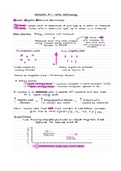
Nuclear Magnetic Resonance Spectroscopy
Understanding Nuclear Magnetic Resonance Spectroscopy (NMR), intensity of the signals, how to determine which signal represents different areas of a compound and differences between Carbon and Hydrogen NMR. Explains Shielding of nuclei v.s. deshielding and how increasing chemical shift affects electron pull.
- Class notes
- • 3 pages •
Understanding Nuclear Magnetic Resonance Spectroscopy (NMR), intensity of the signals, how to determine which signal represents different areas of a compound and differences between Carbon and Hydrogen NMR. Explains Shielding of nuclei v.s. deshielding and how increasing chemical shift affects electron pull.
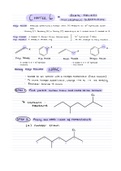
Alkyl Halide Nucleophilic Substitution
Overviews of Alkyl Halide Nucleophilic Substitution and how to name using IUPAC naming system. Gives many examples of how to name and ordered steps. Shows different halides.
- Class notes
- • 4 pages •
Overviews of Alkyl Halide Nucleophilic Substitution and how to name using IUPAC naming system. Gives many examples of how to name and ordered steps. Shows different halides.
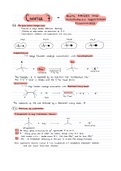
Alkyl Halides and Nucleophilic Substitution
Covers steps for Alkyl Halides and Nucleophilic Substitution including reaction scheme, steps, naming, drawing, leaving groups and effects on the reaction.
- Class notes
- • 3 pages •
Covers steps for Alkyl Halides and Nucleophilic Substitution including reaction scheme, steps, naming, drawing, leaving groups and effects on the reaction.
